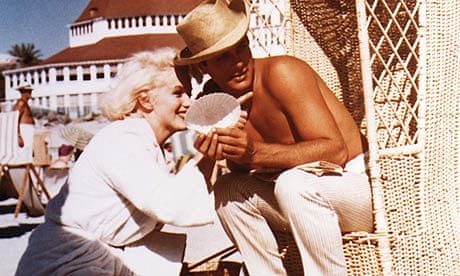Michael Jackson’s alleged s**ual abuse of Wade Robson and James Safechuck at Neverland Ranch remains a contentious issue following HBO’s “Leaving Neverland” documentary.
Despite their convincing accounts, concrete evidence to support these claims may never surface due to Jackson’s secretive nature, leaving fans to speculate and propagate various myths and rumors about the late pop icon.
One prevalent myth suggests that Michael Jackson was s**ually abused by his father during his childhood, implying a cycle of abuse.
Although he faced accusations of misconduct with children, including a reported settlement in the ’90s and a 2005 trial where he was found not guilty, no concrete proof links his behavior to his upbringing.
Rumors surrounding his father’s alleged abuse circulated in the music industry, fueled by his sister La Toya Jackson’s initial claims of mistreatment, which she later recanted.
However, no family member confirmed these allegations, and Jackson himself never explicitly blamed his father for such acts.
Another myth questions Michael Jackson’s sexuality, with speculations ranging from being gay to asexual.
While some sources suggest he had romantic relationships with men, contradicting accounts from women who were close to him paint a different picture.
His ex-wife Lisa Marie Presley described their s** life as passionate, and other female acquaintances shared intimate experiences with the pop star, challenging assumptions about his s**ual orientation.
The belief that Michael Jackson aspired to be white also circulates as a myth, particularly evident in his changing appearance over the years.
Following the success of “Thriller,” his skin lightened, leading to speculations about his racial identity and motives.
Despite these assumptions, Jackson attributed his lighter complexion to vitiligo, a skin condition that causes pigmentation loss, a claim supported by his autopsy results.
He maintained pride in his Black heritage, emphasizing his identity and dismissing notions of rejecting his race.
Contrary to popular belief, Michael Jackson did not invent the moonwalk, a dance move that captivated audiences worldwide during his performance of “Billie Jean.”
While he popularized the step, attributions to dancers like Jeffrey Daniel and influences from various artists suggest a collaborative evolution of the move.
Jackson’s unique interpretation and fusion of different dance elements culminated in a groundbreaking routine that defined his artistic legacy.
Lastly, rumors surrounding Michael Jackson’s physical appearance postmortem, specifically his nose, sparked debates about cosmetic alterations and prosthetics.
Reports of missing prostheses and cartilage exposure surfaced after his death, fueling speculations about his facial features.
However, official statements from the Los Angeles County coroner dispelled these rumors, clarifying misconceptions about Jackson’s appearance and emphasizing the misconstrued narratives surrounding his physical transformation.
In essence, the enduring myths surrounding Michael Jackson’s life and legacy reflect the enigmatic persona he maintained throughout his career.
Despite controversies and speculations, his impact on music and entertainment endures, solidifying his status as an iconic figure whose legacy transcends the boundaries of time and space.



